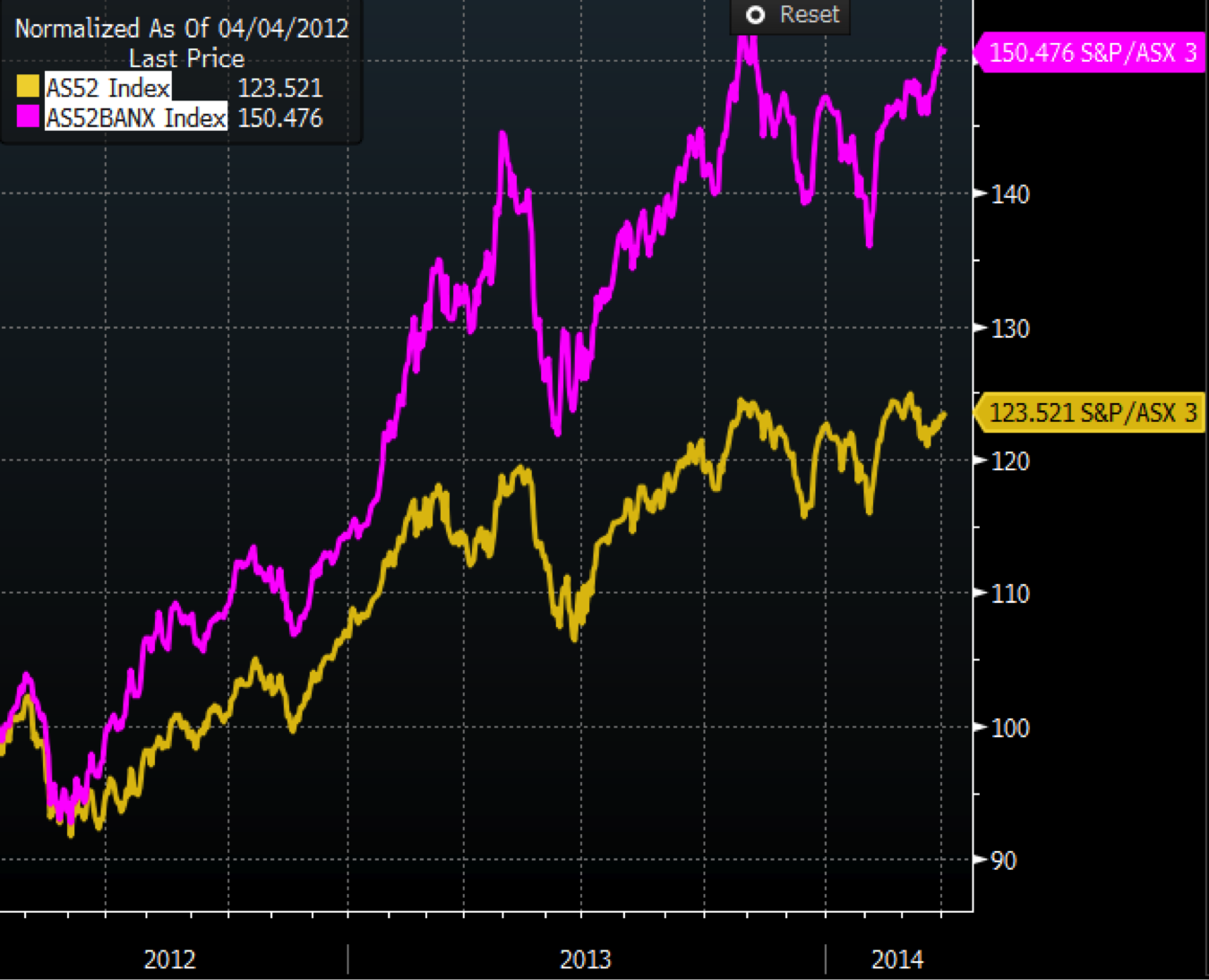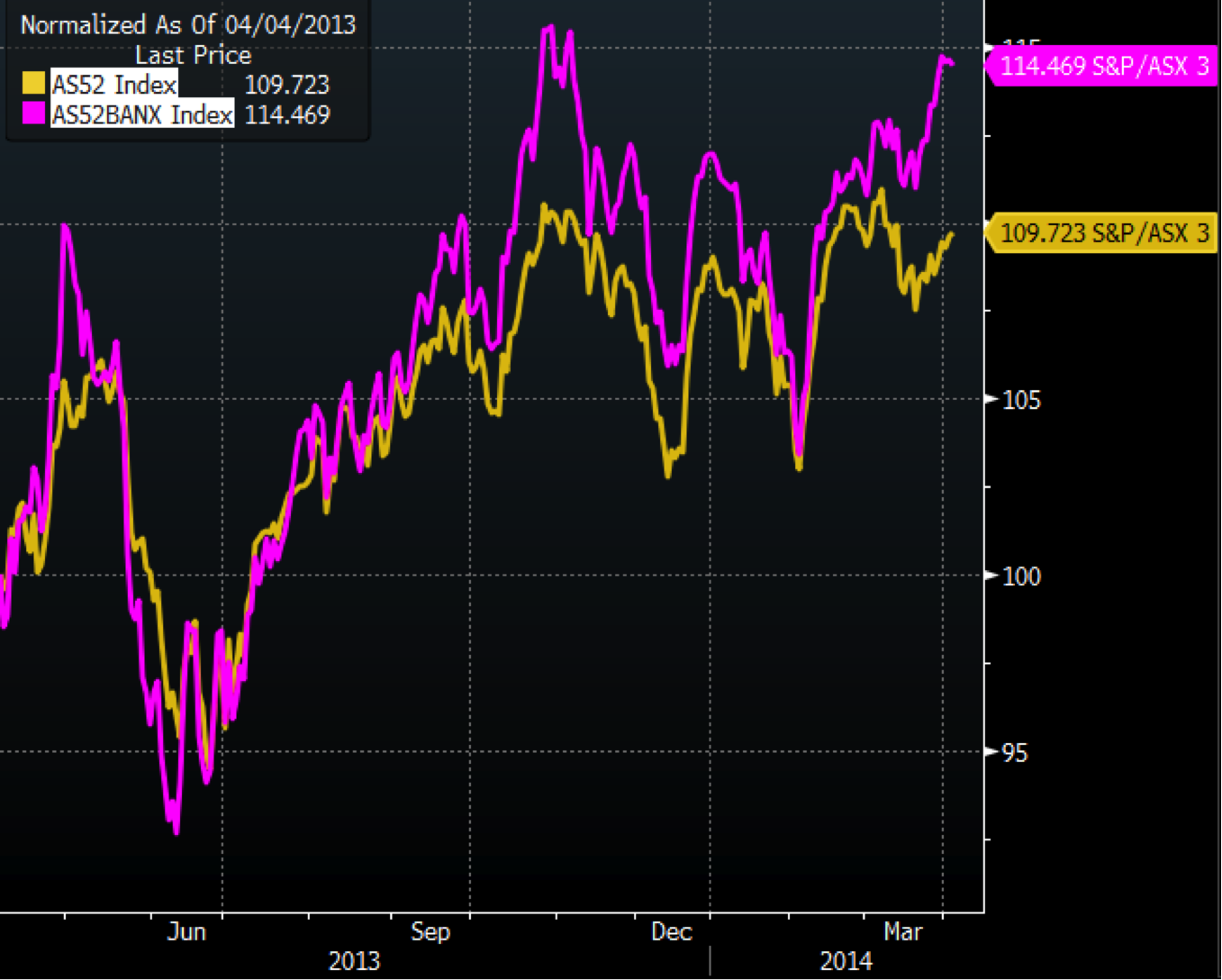
Has the search for yield run out of steam?
One prominent feature of the Australian equity market in the last few years has been strong support for large dividend-paying stocks. The Big Four banks have been particular beneficiaries of this, and have enjoyed share price gains that seemed to go beyond what might otherwise be justified. The first chart below compares the ASX300 (in yellow) with the banks’ sub-index (in pink) for the past 24 months. Bank shareholders have done very well during this period.
The second chart below shows the same thing, but for the most recent 12 months. You can see that while the banks have still done well in this time frame, they haven’t beaten the broader market by much.
There are many possible explanations for this, and it is difficult to pin down specifically what has changed, but some possibilities include:
- Increasing investor comfort in a rising market has boosted risk appetite, and investors have become interested in growth rather than just yield (this would fit with our observation that some high-growth companies have become expensive more recently).
- The prospect of rising interest rates has led to a reassessment of the merits of high dividend-paying stocks. When there is the opportunity to earn a reasonable return on cash, investors may feel less need to take equity risk in order to generate income.
- A falling Australian dollar may have reduced the appeal of large Australian stocks to international investors. Borrowing overseas at very low interest rates and investing in Australia at high yields has been an attractive strategy, but a falling AUD has the potential to quickly unwind these benefits.
These are all plausible explanations, and each may play a role in explaining the recent slowing. However, it is difficult to judge exactly which factors are important, and even more difficult to predict how these factors might change in future.
Fortunately, there is an easier way to navigate a path through all this, and that is to focus on value. When shares become expensive (as at least some of the large bank shares did in recent times), then the prospects for future returns start to diminish. We can’t tell when it will happen, but we are confident that in the long run, share prices will answer to value.
If you can take a long-term view, investing becomes a much simpler proposition: buy good quality companies when they are cheap, and be patient when they are expensive.

